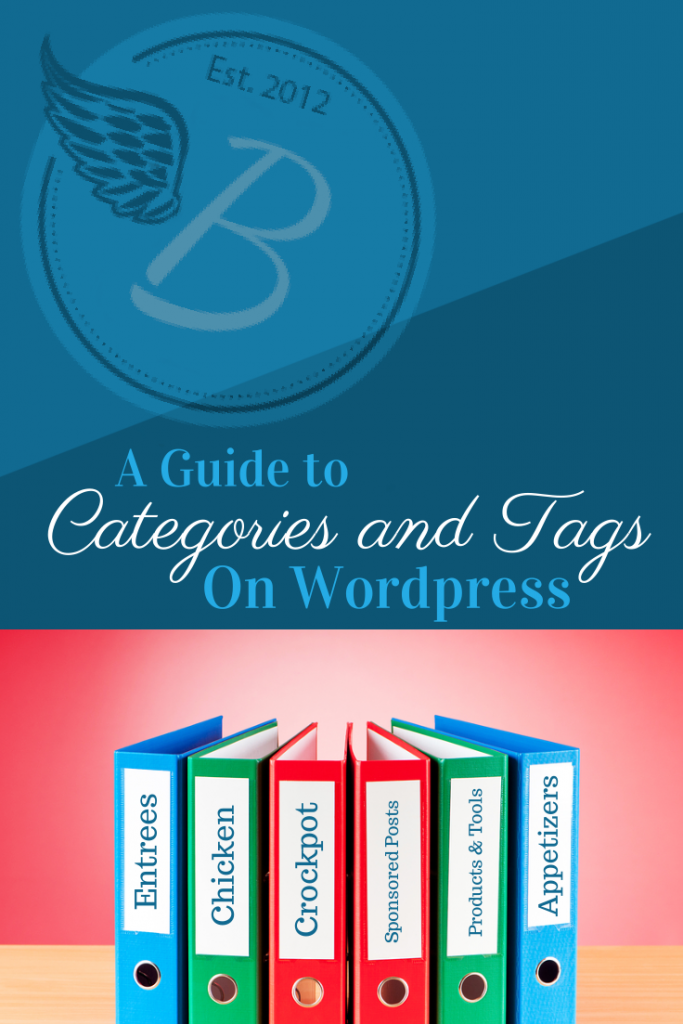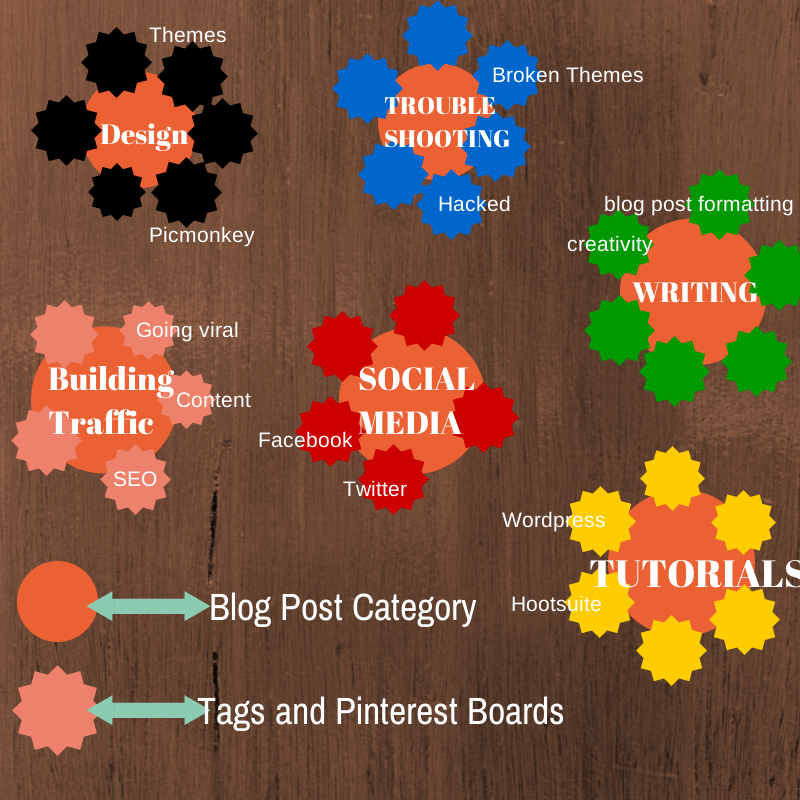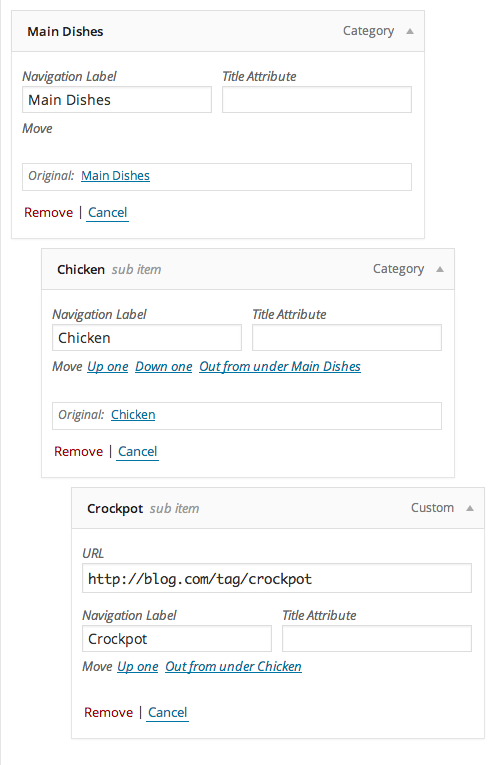How Do I Add Tags To My Blog
You are here: Home / Wordpress Guides and Tutorials / Using Categories and Tags on Wordpress to Create a Great Reading Experience on Your Blog
 Today's post is going to be a complete explanation of how categories and tags work on WordPress, how they help your readers discover older posts, and how to use them in unique and interesting ways to add functionality to your site.
Today's post is going to be a complete explanation of how categories and tags work on WordPress, how they help your readers discover older posts, and how to use them in unique and interesting ways to add functionality to your site.
What is a category on WordPress?
A category is a way to organize your posts. WordPress uses this category to create filtered archives. Many people who begin blogging on WordPress don't necessarily understand categories, and so you might go about making them up as you write along. The problem is that too few categories make it difficult for your readers to find the things that interest them, too many is laborious.
Let me give you an example of some bad ways to use categories for the average lifestyle blogger:
Too few categories…
- Random stuff
- Family life
- Food
Too many categories (or too confusing and scattered)…
- Easter
- Chicken Recipes
- My kids
- Funny stuff
- Wordless Wednesday
- Family photos
- Crafts
- DIY
- Cool Tweets
- Christmas Vacation
- Autism
- Cleaning tricks
- American Girls
- Dieting
In one case, everything is smushed together. In the other, it's very random and hard to grasp what exactly your niche is.
How to go about creating new categories for your blog:
For many of us, we need to delete a lot (or most) and then start over. It takes several months of blogging before you discover what is working with your audience anyhow, and that's a perfect time to hone in on your niche and what you want to be known for online. So whether you have a million or none, it's time to spring clean your categories!
- Pick six words that encompass your blog (it can be a few more or less than six).
- Every single thing you write about needs to be able to be categorized into these six.
- When you've done that, take each word and put it on a piece of paper. Circle it and draw a web around the word.
- Think of other words that you associate with this overarching keyword and write them down.
- Here's a mock up of what my Fabulous Blogging category web looks like.

If you notice on my diagram, those six keywords have become my categories (and in fact, I have more like 10 or 12 on my real sheet I did up). All the surrounding words become my tags (and I've also suggested that they can be a launch point for Pinterest boards. That's something I cover in my Social Media Bootcamp).
What are tags?
Tags are a more specific way for your readers to find blog posts centered on a similar topic. People often mistake tags as an SEO function, but they are not. They are meant to help organize your site, not to drive traffic from Google.
Did you know tags and categories become part of a URL in your archives?
It's true. If you go to the bottom of a blog post and click on the category or tag under which it was filed, you'll see that the archive URL has the name of the category/tag in it. So think long and hard about what those words should be. You want words that are easy to remember and relevant to your topic.
For example, if you wanted to search for all my design related posts on Fabulous blogging, this URL would take you to them: https://www.fabulousblogging.com/category/design/. You could do the same for gaining-traffic, social-media, etc. ( every time there is a space, WordPress will automatically add a hyphen)
Every blog will have a unique category/tag structure and that's okay, but it's important to be strategic
There is no one method fits all. I want to make that clear. But no matter how many categories and tags you come up with, the important principle to take away is that you want to use your categories and tags to :
- Hone in on your niche
- Create seamless navigation for your readers
- Develop your social streams to all tell the same story as your blog
How to quickly and easily clean out and re-order your categories
Once you've done some brainstorming, this YouTube video will show you the following tricks.
- How to change that annoying default UNCATEGORIZED category.
- How to edit and create new categories.
- How to edit and create new tags.
- How to change posts using the quick edit function (to make things go faster).
- How to create a primary menu bar using categories and tags.
- How to display certain items on your sidebar DEPENDING on the category the page is labeled as.
What about category hierarchies?
Good question. Sometimes it's not clear if you should use a sub-category or a tag. It's really a judgment call. But here's an example of how a food blogger might use categories, sub categories, and then tags.
This pretend food blogger uses MAIN DISHES as an overarching category. Not too specific, not too broad. Then, he makes a sub category called CHICKEN . This category's parent is MAIN DISHES but it further separates out the chicken recipes. Then, he makes a tag called CROCKPOT . This way, a reader can find dinner recipes for chicken using a crockpot . Bam ! ( as Emeril Lagasse might say).

Creative category ideas for various bloggers
I get people all the time that say, " Well it's easy if you're a food blogger, but what if you're a midlife lifestyle or Mom blogger?" Here are some ideas for categories and then secondary categories (or tags).
Humor Blogger who happens to be a great (and hilarious tweeter)
- Twitter Recaps
- Parenting Fails > (tag or secondary category) Shopping, School, Sleeping, Church
- Eating Snafus
- Weird People > Mothers, Bosses, Teachers, Social Media Gurus
- Strange Stuff I Find Online > Memes, Dsyfunctional Society
- Top Ten Lists > You could use the same tags listed above to further organize your top ten lists
Aspiring Children's Writer/Mommy blogger
- How to Write > Tips, strategies, motivation
- When I Have Writer's Block (you can use the same tags for this category)
- Real Life Inspiration for Writing > relationships, kids, nature, other authors
- Writing Prompts > Fiction, non-fiction, poetry
- Books that Inspire Me
- Personal Anecdotes > (use the same tags from the real life inspiration)
Midlife/Empty Nester Blogger
- Distracting myself from the Empty Nest > Books, shopping, dining, work
- Marriage in Midlife > Sex, date night, new routines
- Rearranging an Empty Nest Home > organization, new hobbies, decorating
- The changing body > Menopause, exercise, dieting
- Keeping a sense of humor
- Parenting Adults > College , money, grandchildren
If you're the kind of blogger that does a lot of linkups or sponsored posts
- Linkups > (then tag your linkups with) crafts, recipes, pin-it parties
- Sponsored Posts > Food, Baby supplies, women's items
- Personal stories > Kids, marriage, household disasters
- Creativity > (use similar tags that you use for linkups)
- Giveaways > Food, cash, products, books
- Coupons > (use the similar tags listed above)
As you can see in the above examples, you want your categories to be broad, and your sub-categories and tags to be specific. This helps people find exactly what they are looking for. A few more tips and tricks:
- Have a related posts plugin or button at the bottom or on the side of posts that display only when a certain category is up.
- Display awards or blog hop buttons on only the relevant tagged posts.
- Create sidebar menus displaying more options for posts depending on the category of post.
- Create a landing page layout where there are category grids showing the types of posts they can browse.
- Use the tag cloud with your category taxonomy.
- Consider linking up a Pinterest board and put the URL of the tag archive (or category archive) in the description of the board.
- Do you have two separate blogs in one? Create a landing page and instead of one blog tab, create two menu tabs that link to category archives . Then create the two main categories with sub categories under each parent.
- Want a featured area? Create a featured or popular category to use in a slider or widget.
How Do I Add Tags To My Blog
Source: https://www.fabulousblogging.com/2014/04/categories-and-tags-on-wordpress/
Posted by: dayintere.blogspot.com

0 Response to "How Do I Add Tags To My Blog"
Post a Comment